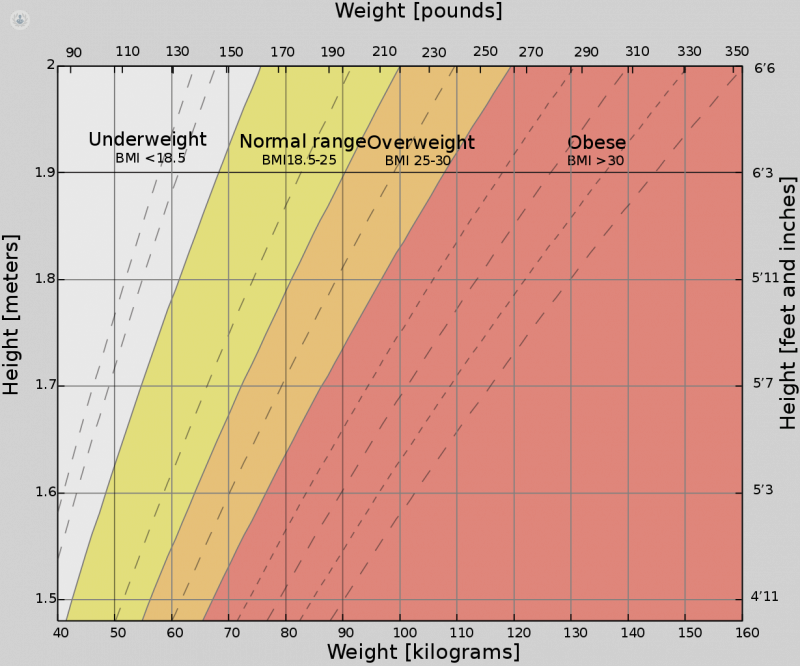Body mass index (BMI)
Aaron Deere - Nutrition & dietetics
Created on: 07-08-2013
Updated on: 04-24-2023
Edited by: Conor Lynch
What is BMI?
BMI, or body mass index, is a value used to determine if a person is a healthy weight in relation to their height. It can be calculated as the body mass divided by the square of the height and is expressed in kg/m2.
How is BMI used?
Body mass index is used to assess if a person’s weight is appropriate for their height, i.e. if they have a healthy weight or not. There are four main categories that a person may fall under:
- underweight
- normal weight
- overweight
- obese
These categories can be further subdivided to assess the degree to which a person is underweight or obese. If the person’s BMI is particularly low or high, they may be advised to make lifestyle changes or even receive treatment if the doctor believes their weight is affecting their health.
Patients with high BMIs are at a higher risk of a number of serious conditions, such as coronary artery disease, hypertension and stroke, while those with very low BMIs may be suffering from malnutrition or an eating disorder.

What is a healthy BMI?
A BMI of 18.5-25 kg/m2 is considered to be a healthy weight for an adult, according to WHO (World Health Organisation) guidelines. An adult with a BMI of under 18.5 is considered underweight.
A BMI of between 25 and 30 is considered overweight, while those with a BMI greater than 30 are considered obese. Obesity can be classed as moderate (BMI 30-35), severe (BMI 35-40), very severe (BMI 40-45), morbid (BMI 45-50), super (BMI 50-60), and hyper obesity (BMI 60+).
BMI is used differently for children – rather than categorising them according to fixed thresholds, children’s BMIs are compared to percentiles for the age groups and genders, with those with a BMI below the fifth percentile being classified as underweight, and those with a BMI between the 85th and 95th percentiles overweight. The thresholds for adults differ in some Asian countries.
Limitations of BMI
While BMI is regarded as a fairly reliable indicator of whether an individual has a healthy weight, there are certain limitations:
- It does not distinguish between fat and muscle – muscle tissue is heavy, so a healthy individual with a high muscle mass may be overweight according to their BMI.
- It does not take physical characteristics such as body frame into account – slender individuals may have a lower ideal weight compared to someone of the same height with a stockier frame.
- Some people argue that since BMI used the square of the height rather than to the third power, it yields unfair and inaccurate results for particularly short or tall people.


